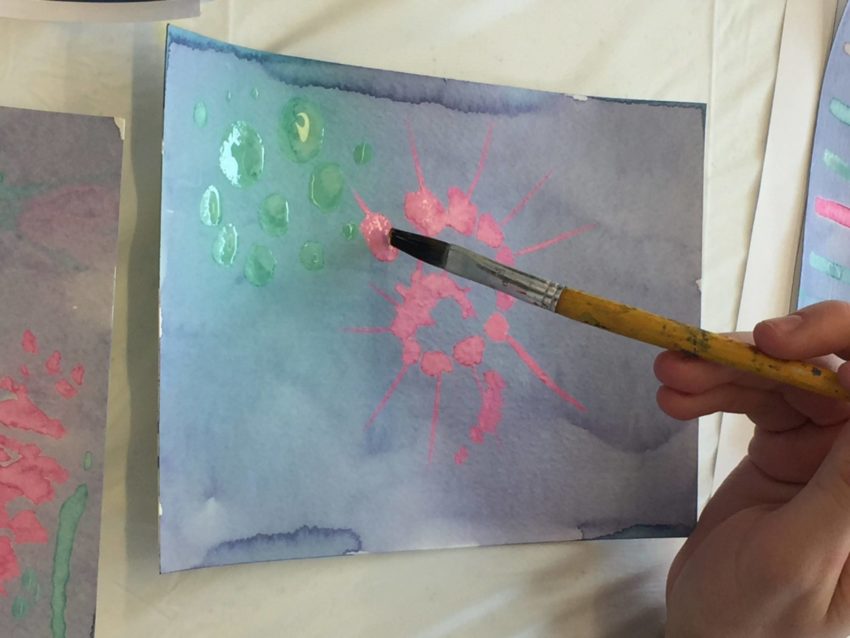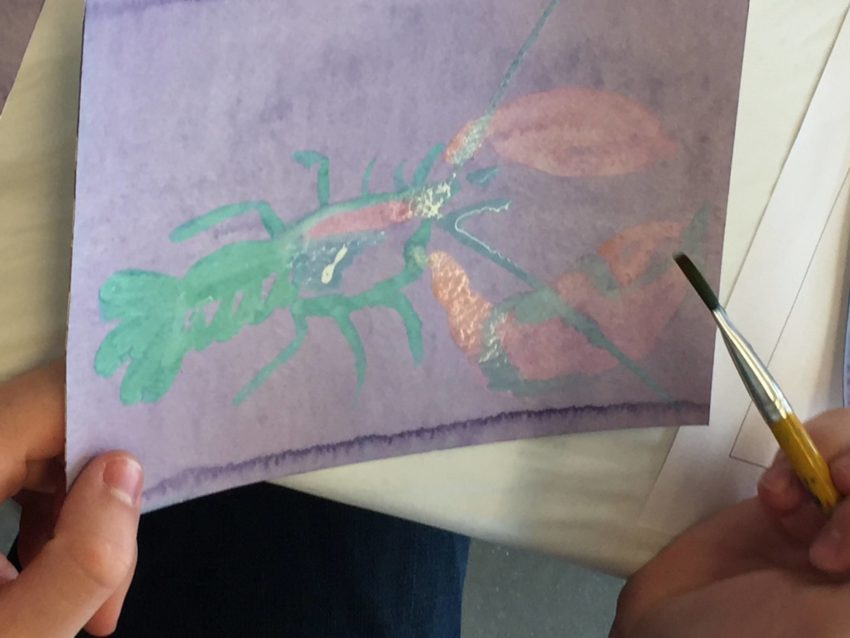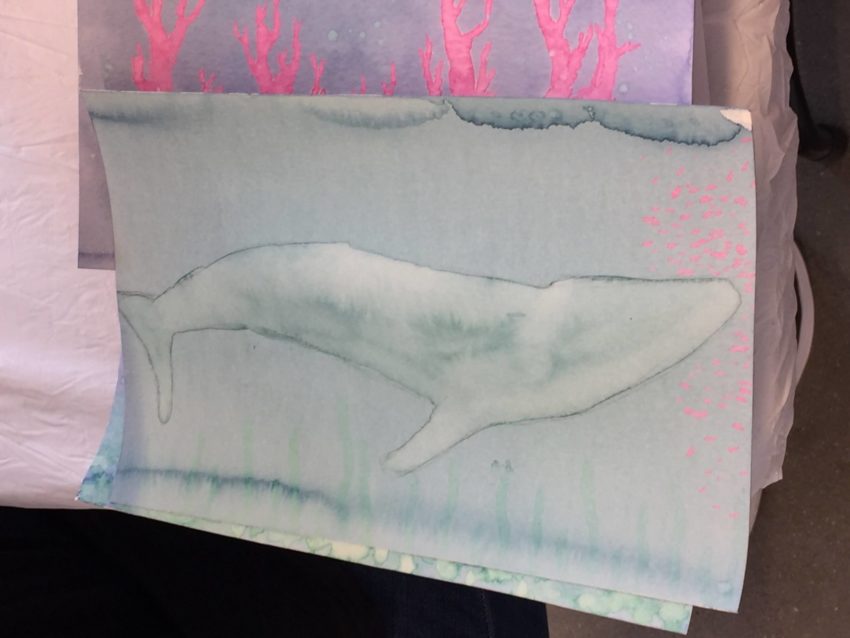
Bringing Ocean Acidification to Life Through Art & Science
June 13, 2019On June 1st, Bow Seat kicked off our summer with a workshop for teens at the Center for Maine Contemporary Art (CMCA) in Rockland, Maine. Coordinating with CMCA’s “Melt Down”—an exhibit of stunning photographs and videos by distinguished Maine artists whose work calls attention to climate change—our workshop focused on ocean acidification, a serious issue affecting marine life in the Gulf of Maine and across the globe.
Ocean acidification is intimately tied to climate change and the amount of carbon dioxide (CO2) released by our society. Like forests, the ocean is a carbon sink, meaning it naturally absorbs CO2 from our atmosphere. The more CO2 our society releases into the air, the more CO2 the ocean absorbs. The combination of water (H20) and CO2 creates carbonic acid (H2CO3); the more CO2 the ocean absorbs, the more acidic the ocean becomes. The consequences of a more acidic ocean are dire for many different types of marine life, especially those that build their shells and skeletons from calcium carbonate, such as shellfish, coral, and certain types of plankton.
Through experiments and art-making, students gained a deeper understanding of the science of pH and ocean acidification. They painted with various acidic and basic solutions (such as lemon juice, vinegar, and soapy water) on watercolor paper treated with cabbage juice (which is a pH indicator). Depending on the acidity of the solution, the paper turns different colors. We made predictions, tested the pH of each of these solutions, and experimented with color.

Focusing on the plant and animal life that are most vulnerable to ocean acidification, students painted seascapes inspired by the Gulf of Maine, the waters off our coast in the Atlantic Ocean: phytoplankton and zooplankton; coral; shellfish; animals that feed on plankton, such as small fish and baleen whales; and animals that eat plankton-eaters, including top ocean predators.
After creating a group collage of all the artwork, we discussed the effects of ocean acidification on the aquatic food web, first removing the panels with the most vulnerable species, then watching the ripple effect of losing these species on the entire ocean ecosystem.




Finally, we discussed what we as individuals and as a society can—and must—do to limit ocean acidification and the global climate crisis.
Here are some of the ways to take action for the blue planet:
- Advocate for change—According to the Intergovernmental Panel on Climate Change (IPCC), a small number of corporations are responsible for 71% of greenhouse gas emissions. For meaningful progress to take place, government policies that allow this type of pollution must change. Contact your elected officials and let them know that you support stricter pollution regulations and policies that expand the availability of renewable energy sources like solar, wind, and geothermal. Take part in global climate strike and other movements for action. When you turn 18, vote for candidates who support common sense environmental policies. Maybe even run for office yourself!
- Consume less energy—Turn off lights, unplug electronics when you are not using them, turn off the air conditioning in the summer, and talk to your parents about buying energy-efficient appliances and investing in renewable energy for your home, such as solar panels. Overall, be conscious of how much energy you are using and try to find ways to reduce this amount.
- Consider how you travel—Carpool, use public transportation when available, and bike or walk when traveling short distances from your home.
- Buy local—Food and products made close to home have not traveled as far to reach you, thus burning fewer fossil fuels.
- Eat more plant-based meals—The amount of land and energy used to raise, process, and ship agricultural animals accounts for a large amount of carbon emissions. A diet that is primarily plant-based will greatly decrease your carbon footprint.
- Educate yourself and others—People are much more likely to listen to their peers, so keep learning and spreading the word!
Thank you to our terrific partners at CMCA for creating an inspiring space for these important conversations to happen!
Comments are closed for this post.
